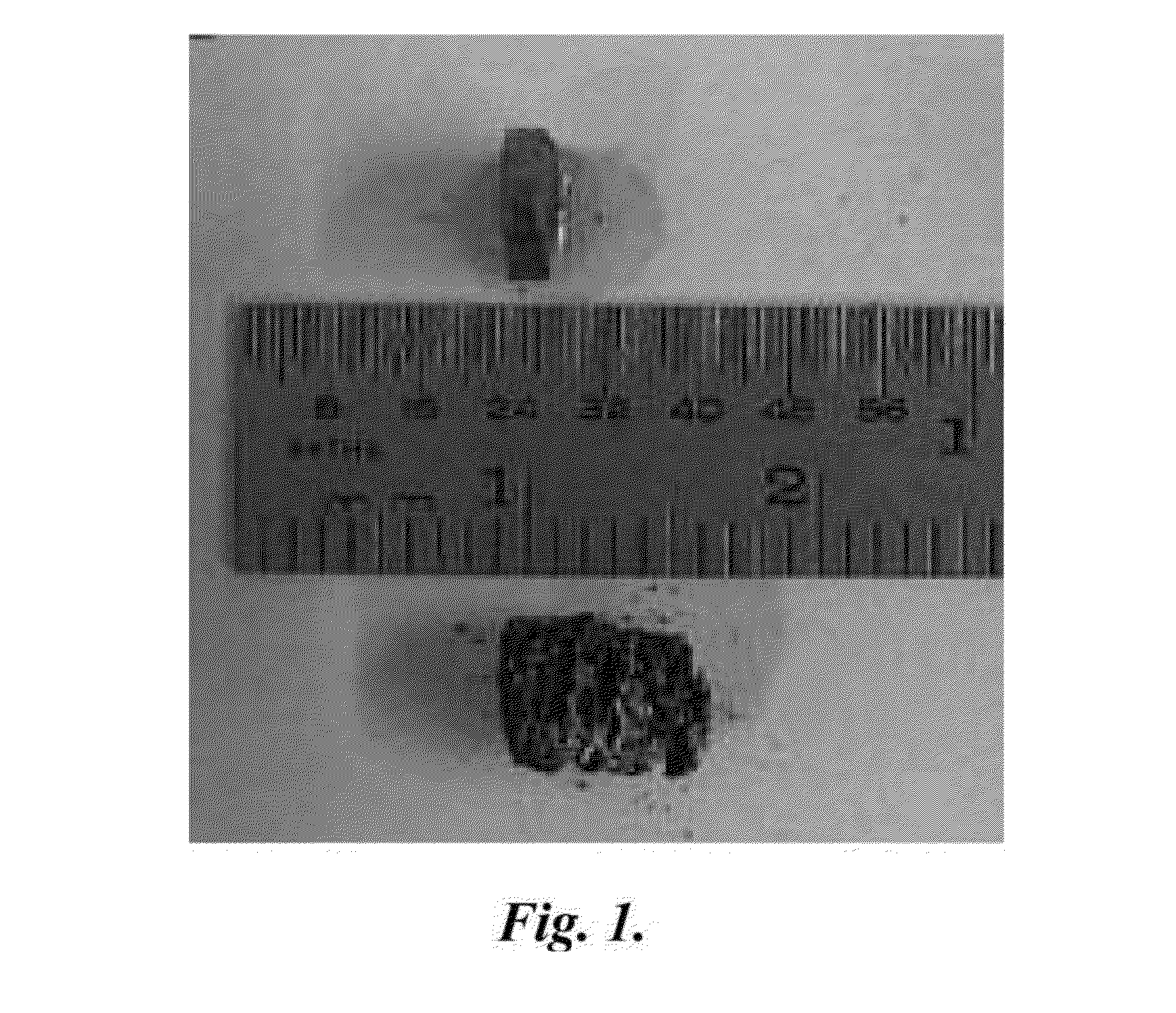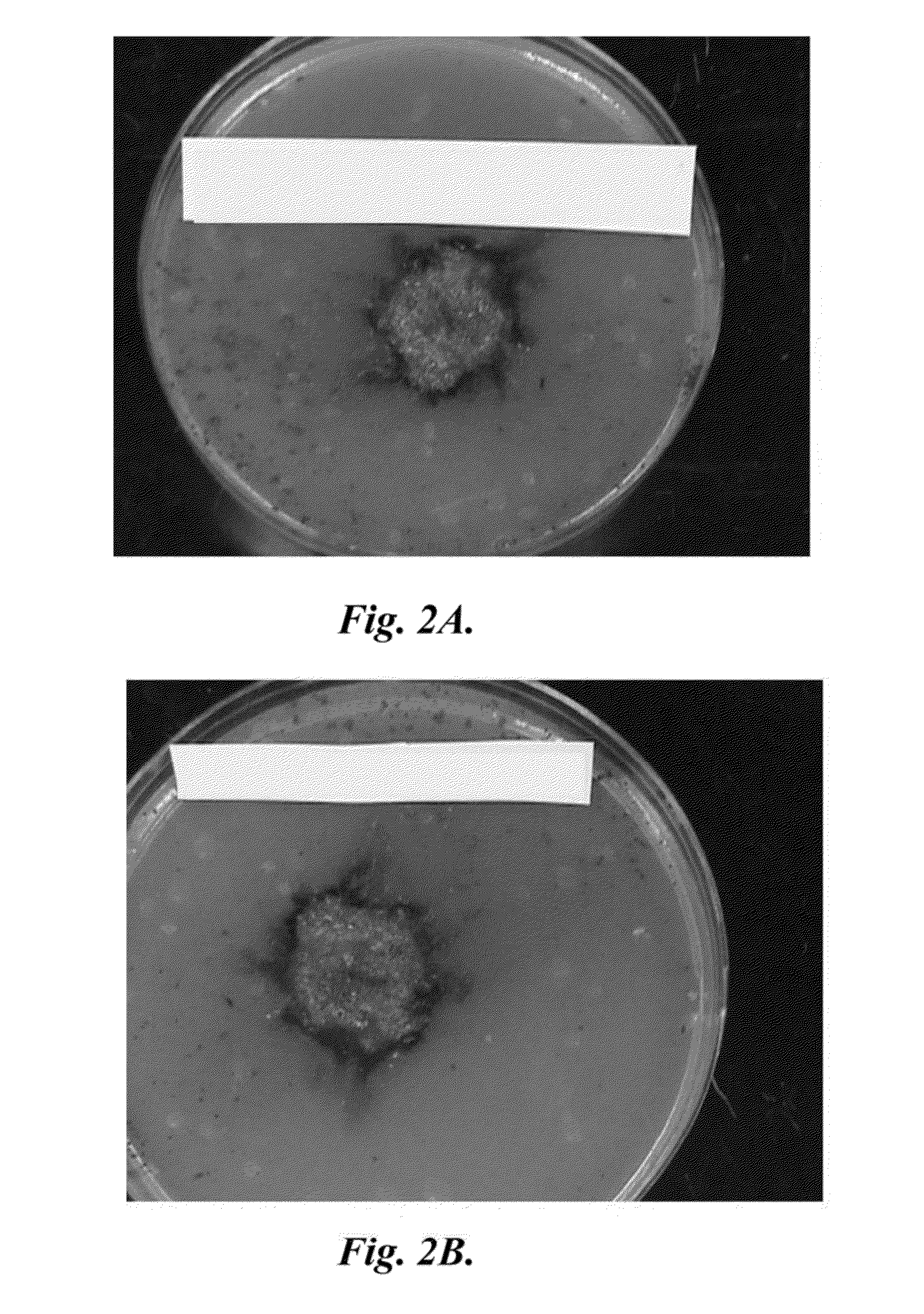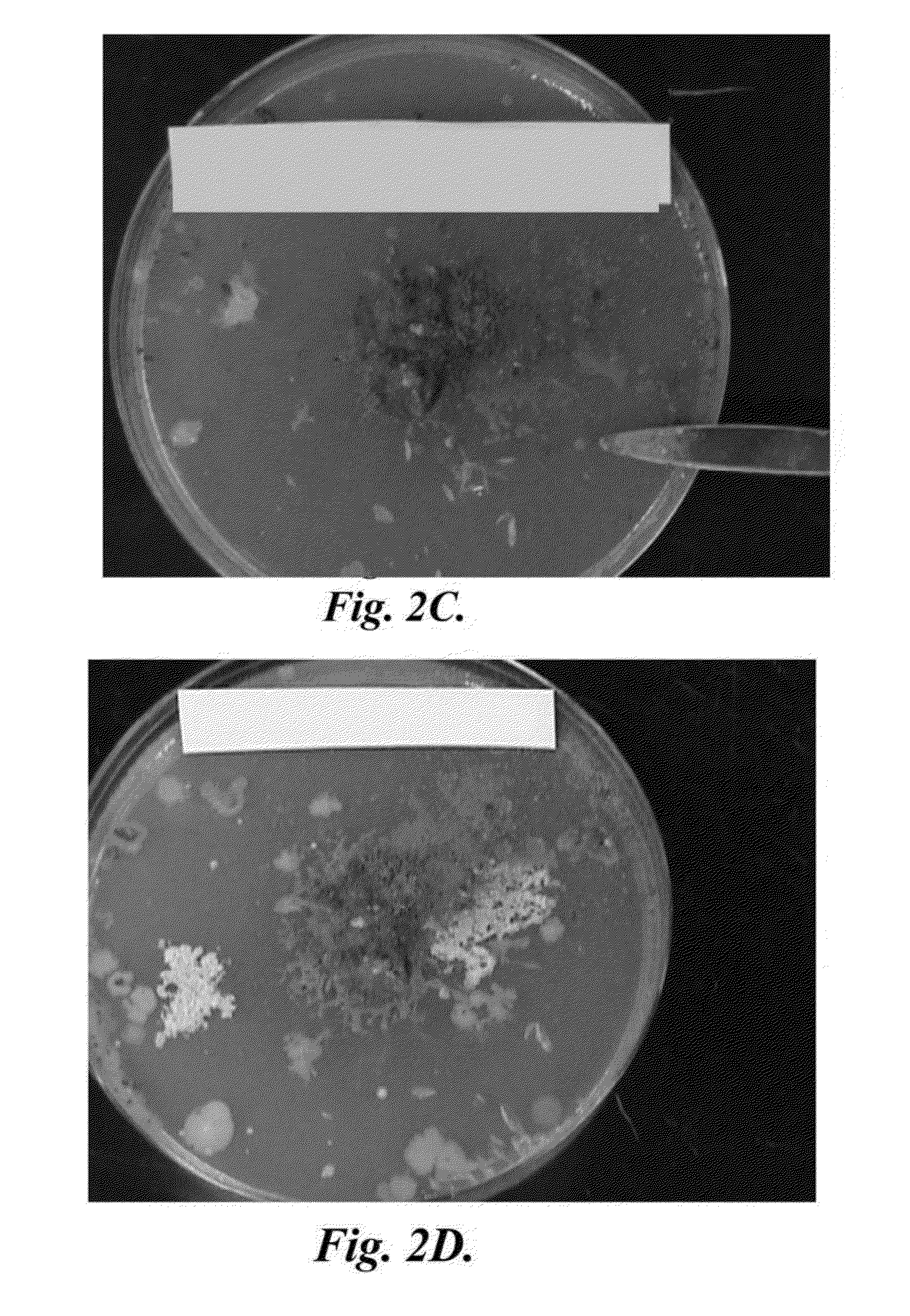Antibacterial metallic nanofoam and related methods
a technology of metallic nanofoam and antibacterial coating, which is applied in the field of antibacterial metallic nanofoam, can solve the problems of contamination of biomedical devices, pipeline applications and food preparation, and bacteria in hospitals, and achieve the effects of limited traditional cleaning methods, such as aerosolized disinfectant sprays or wipes
- Summary
- Abstract
- Description
- Claims
- Application Information
AI Technical Summary
Benefits of technology
Problems solved by technology
Method used
Image
Examples
example 1
Self-Propagating High-Temperature Synthesis and Antibacterial Properties of Representative Nanofoams Al / Ag2O and Al / TiO2
[0060]Experiments were performed to demonstrate bacterial growth kinetics on synthesized foams. The bacteria used for this study was Bacillus subtilis, a spore-forming bacterium like anthrax, but benign. Experimental results were obtained for mixtures composed of Al / Ag2O and Al / TiO2 using nanoscale aluminum. Experiments were also conducted on micron-scale Al / Ag2O to examine the effect of the particle size.
[0061]Particles were mixed by sonication in the same method as described in Intermetallics 14:620 (2006). However, in contrast to that work, the metal oxide nanoparticles acted as the gasification agent (GA) in each mixture. Aluminum particles (nmAl) (NovaCentrix, Inc) with an average particle diameter of 50 nm were passivated with an average alumina shell 2 nm thick and were spherical in shape. The 10 micrometer Al (micron Al) particles had an estimated 3 nm thi...
example 2
Antibacterial Effectiveness of Representative Metallic Nanofoams
[0068]Three bacterial applications were evaluated to determine the antibacterial effectiveness of representative metallic nanofoams of the invention. The same bacteria (Bacillus megaterium) were used in each application. Each nanofoam tested was prepared in by the method described in Example 1.
[0069]The first method utilized a spore solution of bacteria and diluting with distilled water to provide a sample having a sufficient amount of spores. After the bacterial solution was mixed, 50 mL of the solution was extracted and placed directly on the metal nanofoam using a pipette. A variation of this technique was to place the bacterial solution over the entirety of the agar plate.
[0070]The second method utilized the diluted spore solution of bacteria described above. However, rather than using a pipette to extract 50 mL of the solution, a cotton swab was soaked with the bacterial solution and then rubbed over the entire aga...
PUM
| Property | Measurement | Unit |
|---|---|---|
| Length | aaaaa | aaaaa |
| Pore size | aaaaa | aaaaa |
| Porosity | aaaaa | aaaaa |
Abstract
Description
Claims
Application Information
 Login to View More
Login to View More - R&D
- Intellectual Property
- Life Sciences
- Materials
- Tech Scout
- Unparalleled Data Quality
- Higher Quality Content
- 60% Fewer Hallucinations
Browse by: Latest US Patents, China's latest patents, Technical Efficacy Thesaurus, Application Domain, Technology Topic, Popular Technical Reports.
© 2025 PatSnap. All rights reserved.Legal|Privacy policy|Modern Slavery Act Transparency Statement|Sitemap|About US| Contact US: help@patsnap.com



